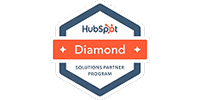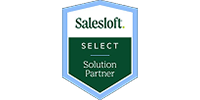Reclaim Your CRM with a Two-Lane Revenue Architecture
Introduction: The CRM Dream vs. Reality
Customer Relationship Management (CRM) systems were conceived as the crown jewel of modern business—one place to see everything about every customer, every touchpoint, every deal. The CRM was supposed to be a trusted system of record, the single source of truth that would unify marketing, sales, and customer success.
But the dream never happened.
Instead, most companies today operate CRMs that are bloated, inaccurate, and fundamentally untrustworthy. They’re digital landfills full of stale leads, duplicate contacts, bad imports, and incomplete data. What was once a beautiful concept—a clean, relational understanding of your customers—has become an ecosystem of chaos.
Below, we walk through how teams ended up here, the hidden costs of CRM pollution, and a practical way to rebuild trust by adopting a two-lane revenue architecture that separates growth from relationship—ultimately reclaiming the CRM’s original purpose.
The Pollution Problem: How CRMs Became Garbage Dumps
Modern CRMs are stuffed with data that doesn’t belong there. Cold leads, scraped lists, imported spreadsheets, expired campaigns—all of it ends up inside Salesforce or HubSpot. Over time, what should be a clean map of relationships becomes an unmanageable mess.
The data decay crisis
- CRM data decays by 30–70% annually, depending on industry.
- 76% of CRM users say less than half their CRM data is accurate and complete (Validity, 2025).
- 37% of companies report losing revenue directly due to poor CRM data hygiene (Validity, 2025).
How the pollution spreads
- Uncontrolled imports: SDRs and marketing ops teams dump contacts in bulk.
- Tool sprawl: Every platform claims to “sync with your CRM,” often creating duplicates.
- Misaligned incentives: Reps are rewarded for volume, not accuracy.
- No governance: Nobody owns data hygiene end-to-end.
The result: a CRM that’s neither a source of truth nor a tool for decision-making. It’s a repository of wishful thinking.
Why the CRM Utopia Failed
- The legacy mindset
For 25 years, businesses have been taught that the CRM is the center of the universe. Every tool must connect to it. Every contact must live in it. Every action must be recorded there. That thinking is what broke it. - The wrong architecture
CRMs were never designed to handle cold data. They’re meant for relationships, not outreach. When companies started pushing prospecting lists, intent data, and scraped contacts into CRMs, the underlying logic collapsed. - No accountability
No one truly “owns” CRM hygiene. Marketing blames Sales. Sales blames Ops. Ops blames the software. In the meantime, the data rots. - The illusion of completeness
Executives love dashboards that promise a 360° view of the customer. The irony is that the more they chase it, the more incomplete—and inaccurate—the CRM becomes.
The Cost of Dirty CRM Data
- Wasted resources: Sales teams spend up to 40% of their time dealing with bad data.
- Lost deals: Outdated contact info and wrong personas directly lower conversion rates.
- Forecasting errors: Executive dashboards are built on polluted foundations.
- Compliance risks: GDPR and CAN-SPAM violations from contacting bad data.
- Cultural impact: Teams stop trusting the system; CRM adoption plummets.
The New Thesis: Clean Is King
It’s time to abandon the 25-year-old paradigm of CRM centralization. The future isn’t about more integrations or bigger datasets. It’s about separation, governance, and quality.
Enter the Two-Lane Revenue Architecture
To fix CRM, split the motion into two parallel systems:
|
Lane |
Purpose |
Tools |
Data Home |
|
Growth Lane |
Cold outreach, prospecting, testing |
Clay, Instantly, HeyReach, Dripify, standalone dialer |
Growth staging database (outside CRM) |
|
Relationship Lane |
Real customers, active opportunities, pipeline |
Salesforce, HubSpot, Gong, CPQ |
CRM (system of record) |
This architecture redefines what belongs inside CRM: only verified, sales-ready relationships. Everything else stays outside.
How It Works: The Gatekeeper Model
A workflow engine like Clay acts as a QA/QC gatekeeper between the Growth Lane and the CRM. Every contact or company must pass through a series of checks:
- ICP validation – Is this the right type of company?
- Data hygiene – Are the fields clean and complete?
- Signal scoring – Does the account show buying intent or readiness?
Only when all three conditions are met does the record graduate into the CRM. Everything else stays in the growth environment, where it can be nurtured or discarded.
The outcome: The CRM becomes what it was meant to be—a trusted system of record for real relationships.
Rebuilding the CRM Mindset
This model demands more than new tools. It requires executives to abandon the habits that made CRMs toxic in the first place.
Old mindset vs. new mindset
|
Old |
New |
|
Everything belongs in CRM |
Only relationships belong in CRM |
|
Quantity over quality |
Quality as a gating requirement |
|
Sync every tool |
Govern what integrates |
|
CRM as universal truth |
CRM as curated truth |
The shift is philosophical: less about collecting, more about curating. Less about total visibility, more about trusted visibility.
The Benefits of the Two-Lane Model
- Trust restored: Exec dashboards actually mean something.
- Operational efficiency: Reps spend more time selling, less time cleaning.
- Faster onboarding: Clear data rules simplify ramp time for new hires.
- Improved conversion: Outreach efforts target verified ICPs only.
- Lower cost of ownership: Fewer seats and syncs to maintain.
This isn’t just a RevOps improvement—it’s an organizational detox.
A New Era for Customer Data
The CRM revolution won’t come from another integration or feature release. It will come from discipline: separating cold growth from customer relationships, enforcing data quality, and protecting the CRM from pollution.
Reclaiming the CRM’s original vision means redefining its role—not as a catch-all repository, but as the heart of trust in the revenue engine.
Because in the end, a CRM is only as powerful as what it doesn’t contain.
Author’s Note
This thesis reflects a growing shift among modern revenue organizations—toward data curation, architectural separation, and system hygiene. For teams ready to pilot the two-lane approach, start by auditing what’s in your CRM today and ask one simple question for every record: “Is this a relationship, or just noise?”










